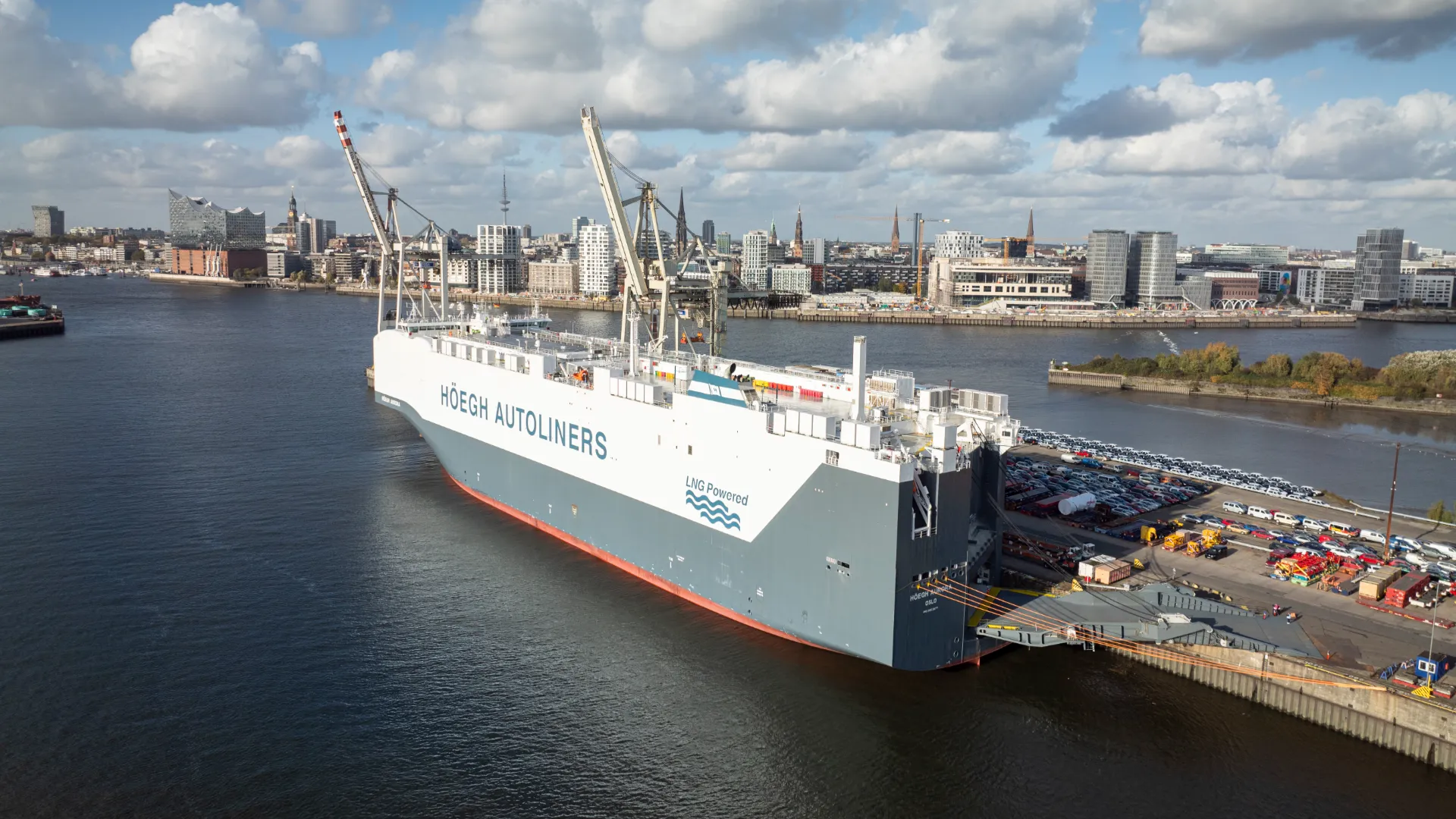When the Höegh Aurora docked in the Port of Hamburg on October 22, 2024, it dwarfed nearby cars and trains and rose above the surrounding buildings. Nearly 200 meters long and 14 decks tall, the vessel can carry up to 9,100 Car Equivalent Units (CEUs), making it the largest Pure Car and Truck Carrier (PCTC) ever built – but the innovations don’t stop there. It’s also the first car carrier in Höegh’s fleet to be propelled by LNG, cutting greenhouse gas emissions per carried car by up to 58 percent compared to current industry standards. Further emission reductions can be obtained with bio-methane or synthetic natural gas.
Considered the “crown jewel” in Höegh Autoliners’ green fleet renewal program, the vessel is the first of the new Aurora Class vessels, raising the bar for size and greener maritime shipping. With these vessels, Höegh is showing vessel operators that they can move from conventional to sustainable fuels in just a few years.
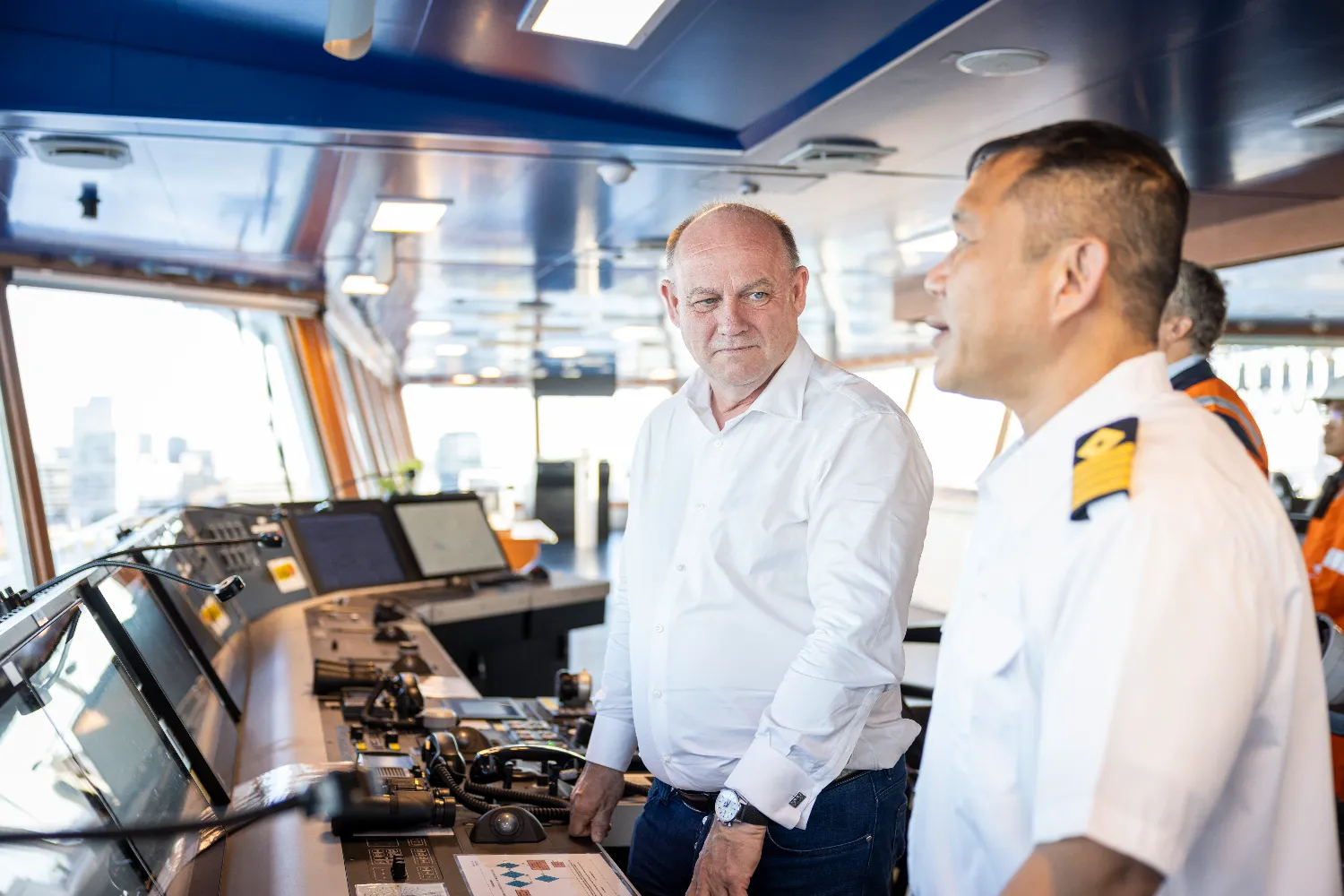

“Many of our big customers are aiming to have a carbon neutral supply chain by 2040. We’re addressing our customers’ needs – and we’re doing it because we can.”
Andreas Enger, CEO of Höegh Autoliners
Methane as a sustainable alternative
Today, hundreds of guests from the shipping industry are boarding the Höegh Aurora to inspect its features. And one of the main attractions, the centerpiece of the vessel, is humming away steadily on Deck 4: a seven-cylinder Everllence B&W ME-GI dual-fuel two-stroke engine.
LNG is typically 85 to 95 percent methane, and with a high heating value and low carbon, methane is regarded as a sustainable transitional fuel on the path to zero-carbon shipping. It is currently also the most readily available type of methane fuel. Using methane significantly reduces greenhouse gas emissions (GHG) and decreases particular matter (PM) and sulfur oxide (SOx) emissions.
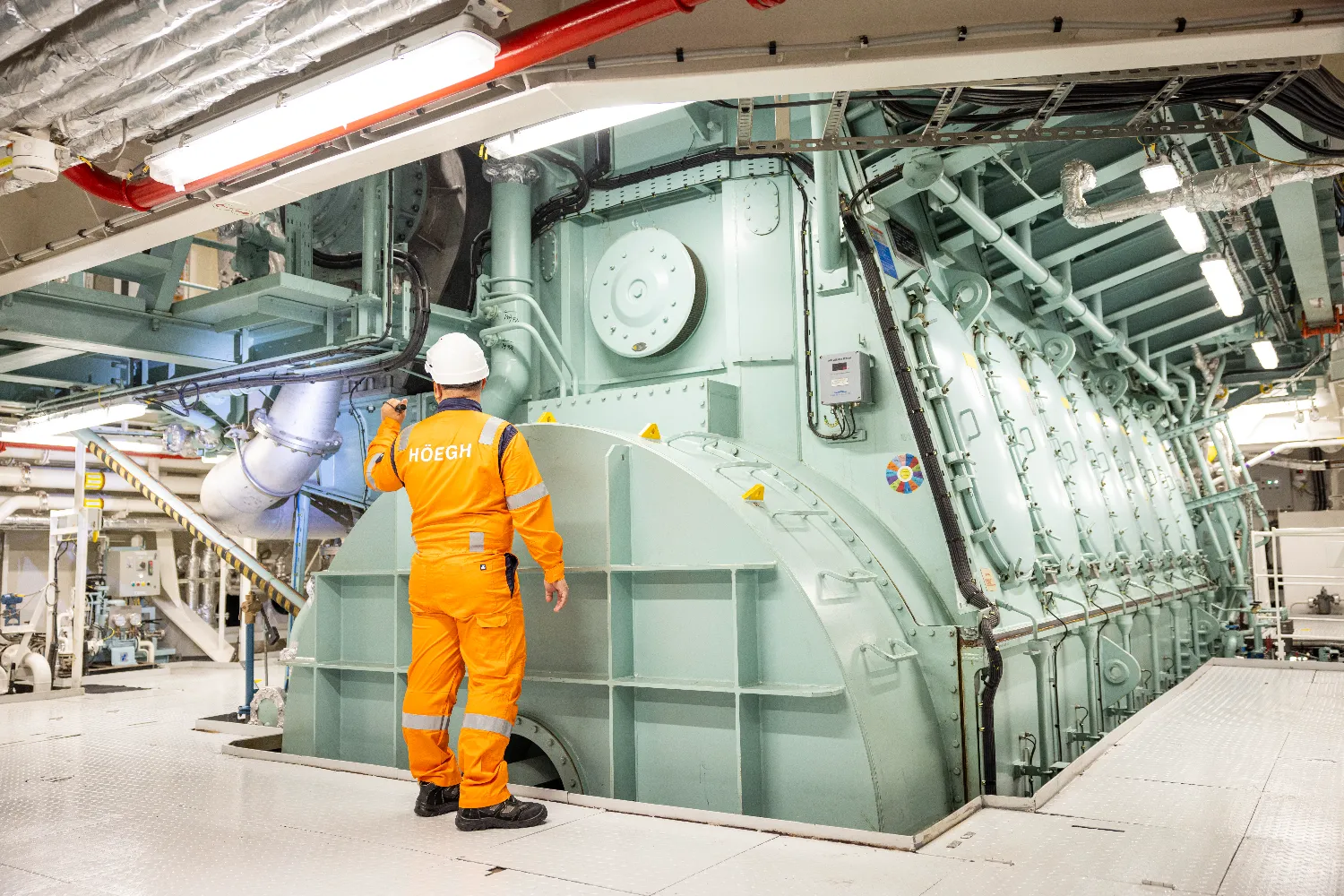
The engine with the lowest methane slip
The ME-GI dual-fuel methane engine is the world’s most efficient, and so far more than 800 engines have been ordered since 2014, accumulating millions of running hours. It also features the lowest methane slip.
The principle of gas injection (GI) means the methane is injected as a gas and uses a Diesel cycle combustion. “This gives you a very economical propulsion engine”, says Bjarne Foldager, Senior Vice President and Head of Two-Stroke Business at Everllence in Copenhagen. Besides, one of the most important advantages of the newest engine is its negligible methane slip. “The amount of unburnt methane is negligible.
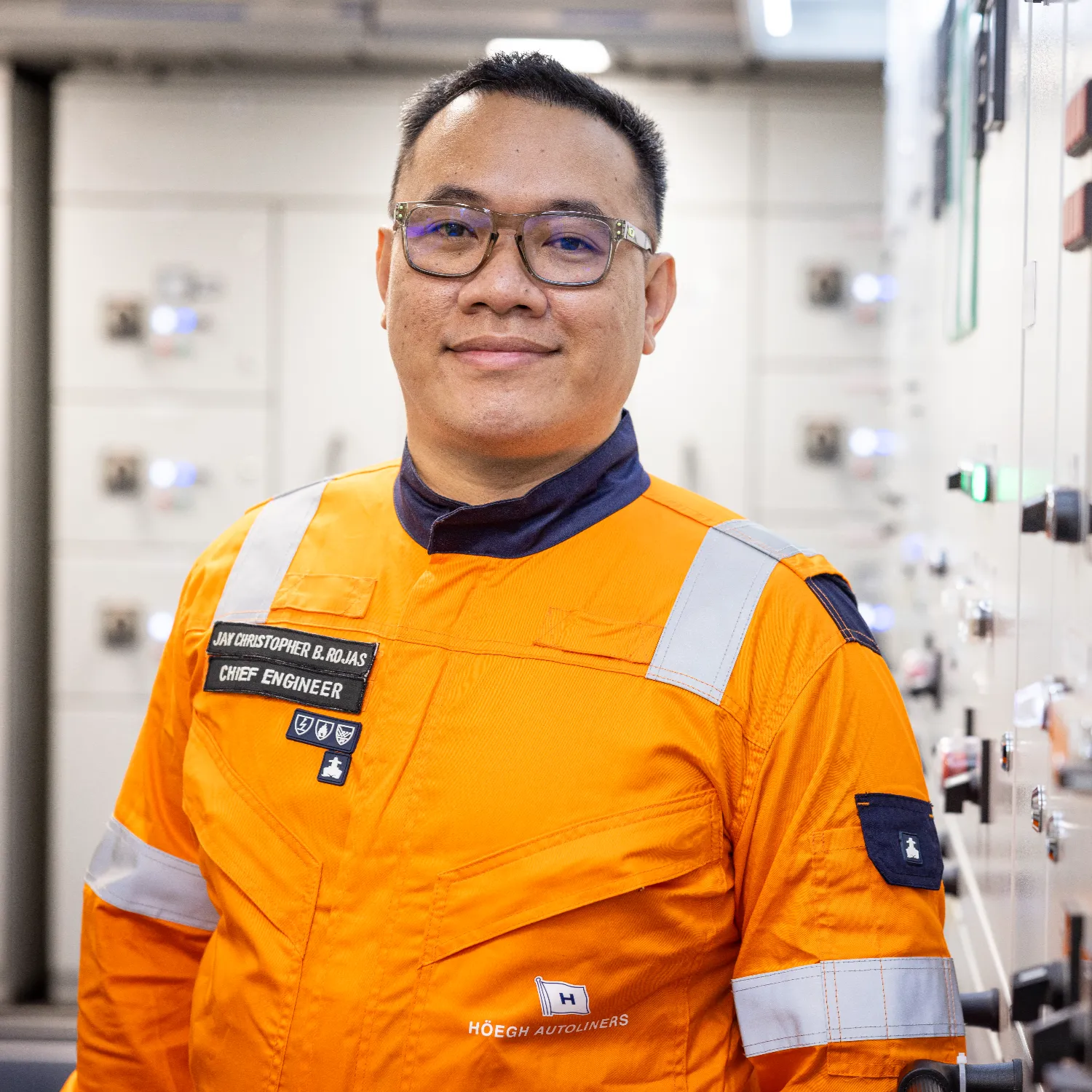
“The scavenging port is very clean – unlike with conventional engines, where we often see carbon deposits.”
Chief Engineer Jay Christopher Rojas
Moreover, the engine can also run on bio-methane and synthetic natural gas (SNG) further supporting the path to more GHG reductions. Chief Engineer Jay Christopher Rojas has now had two months with the new engine after starting its maiden voyage from the shipyard in China. “We see a large reduction of smoke coming from our chimney,” says Rojas, “and for the main engine, when we do inspections, the scavenging port is very clean – unlike with conventional engines, where we often see carbon deposits.”
Reaching net zero emissions by 2040
The Höegh Aurora has been dubbed “the world’s most environmentally friendly PCTC”, and is just the first of 12 Aurora Class vessels on order – all running on Everllence engines. By 2027, all twelve will be in operation, bringing Höegh Autoliners closer to reaching net zero emissions by 2040 – a full decade ahead of the IMO.
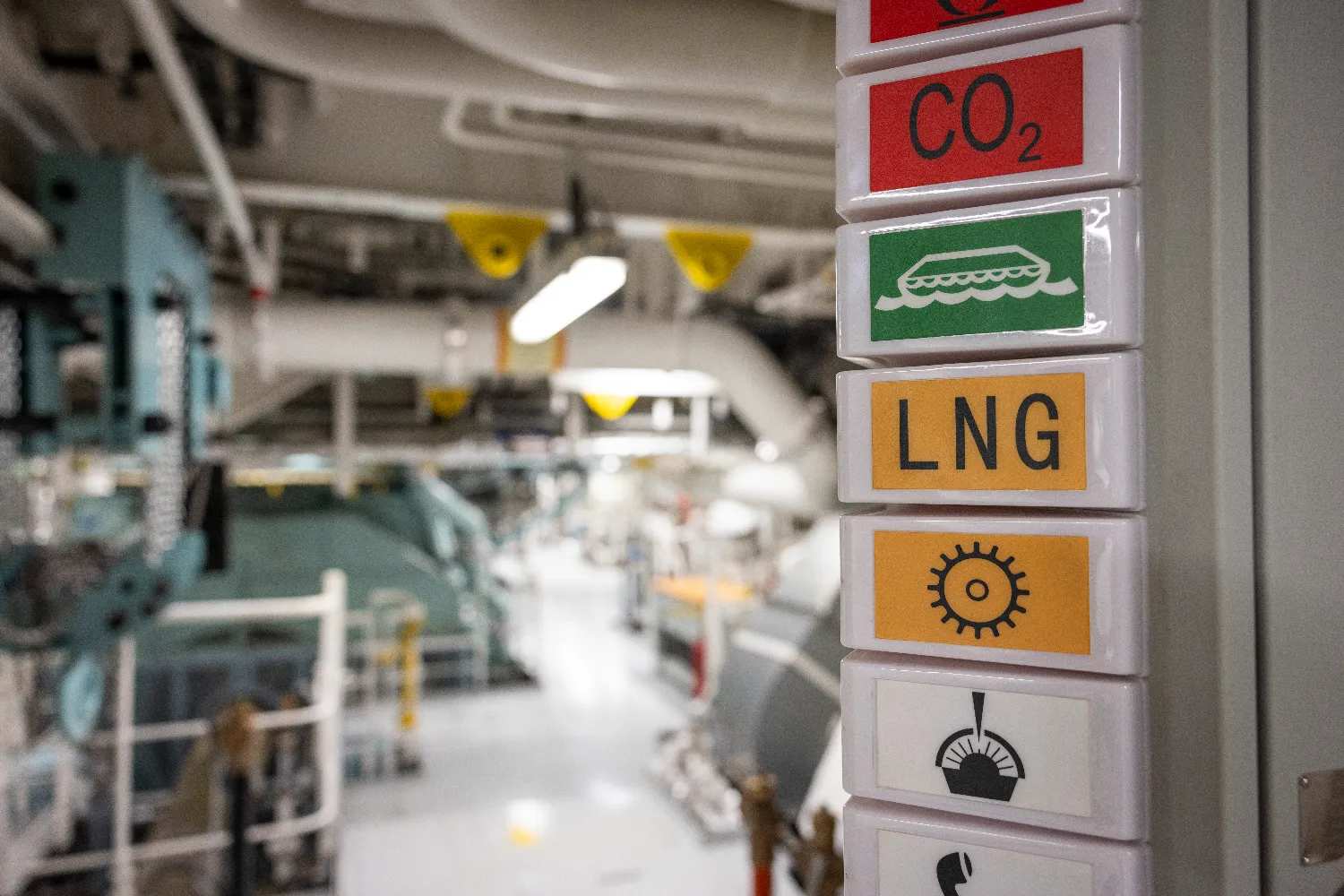
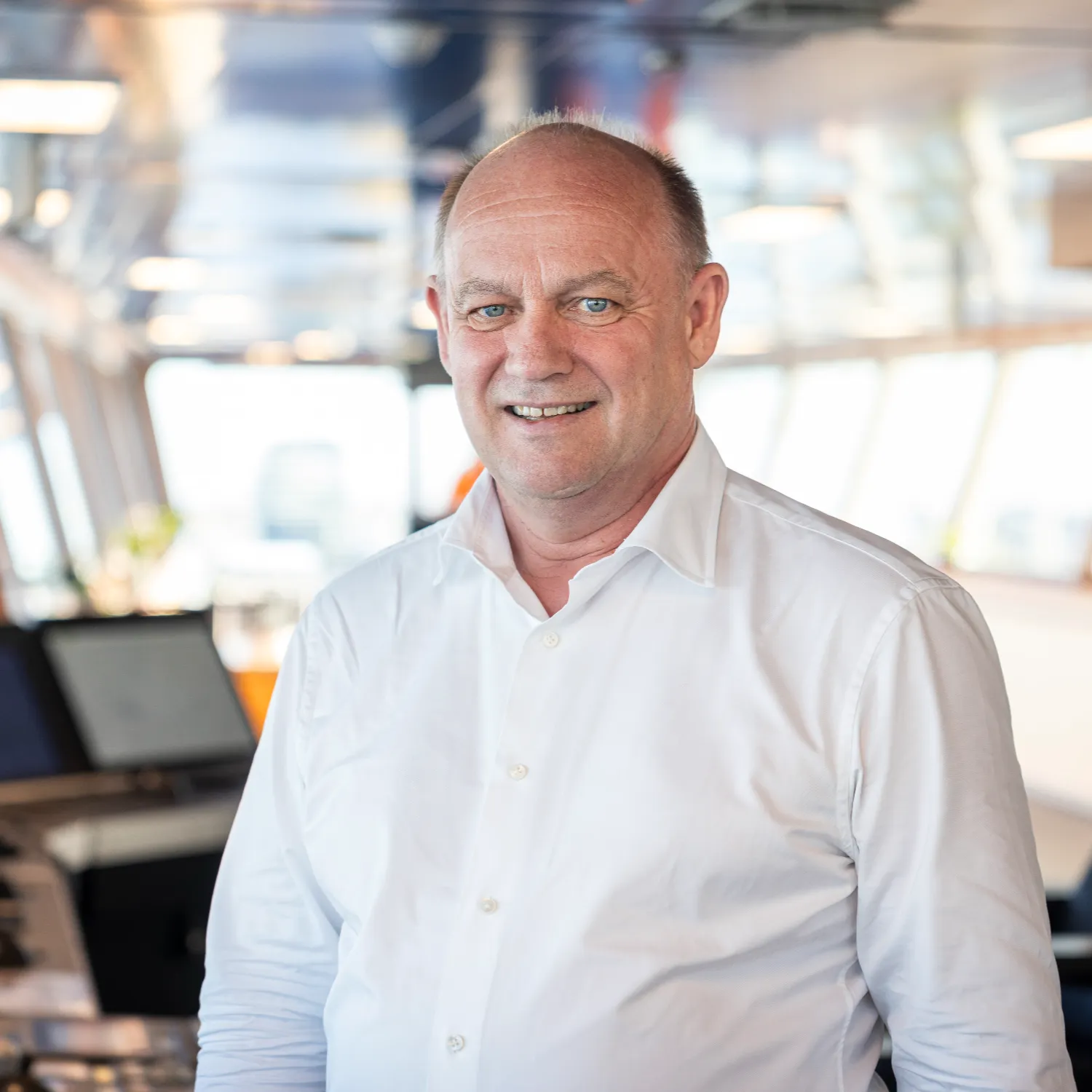
“We’re taking a giant step forward from optimizing traditional engines to using cleaner fuels.”
Andreas Eger, CEO of Höegh Autoliners
From LNG to green ammonia
Until now, Enger adds, traditional engines had always run on liquid fuel. “Now, with this engine, it's our first entry into managing gasses with high pressures and very low temperatures that require other types of safety measurements.” But Höegh Autoliners was fortunate to have a sister company that has its vessels already running on LNG. “So, we’ve been able to train our crew on their vessels to start with, and with our own LNG vessel now in operation, we have our own platform to train the next crew.” On this Höegh Aurora alone, 7 of the 29 crew members are sailors who are being trained. “From here, the transition into other fuels such as ammonia will be much smaller than the step we took just now,” says Enger.
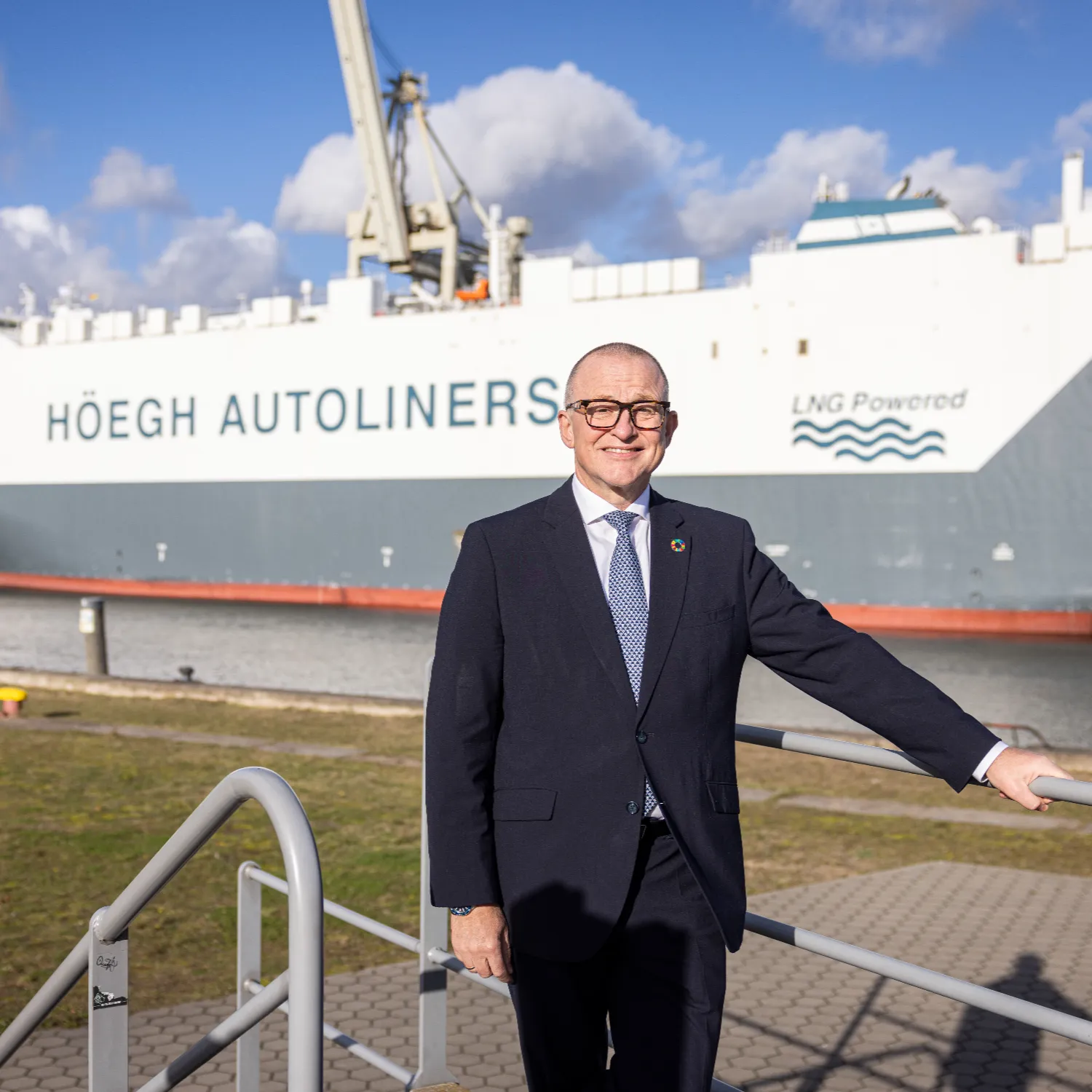
“The amount of methane released into the atmosphere is minimal.”
Bjarne Foldager, Head of Two-Stroke Business at Everllence
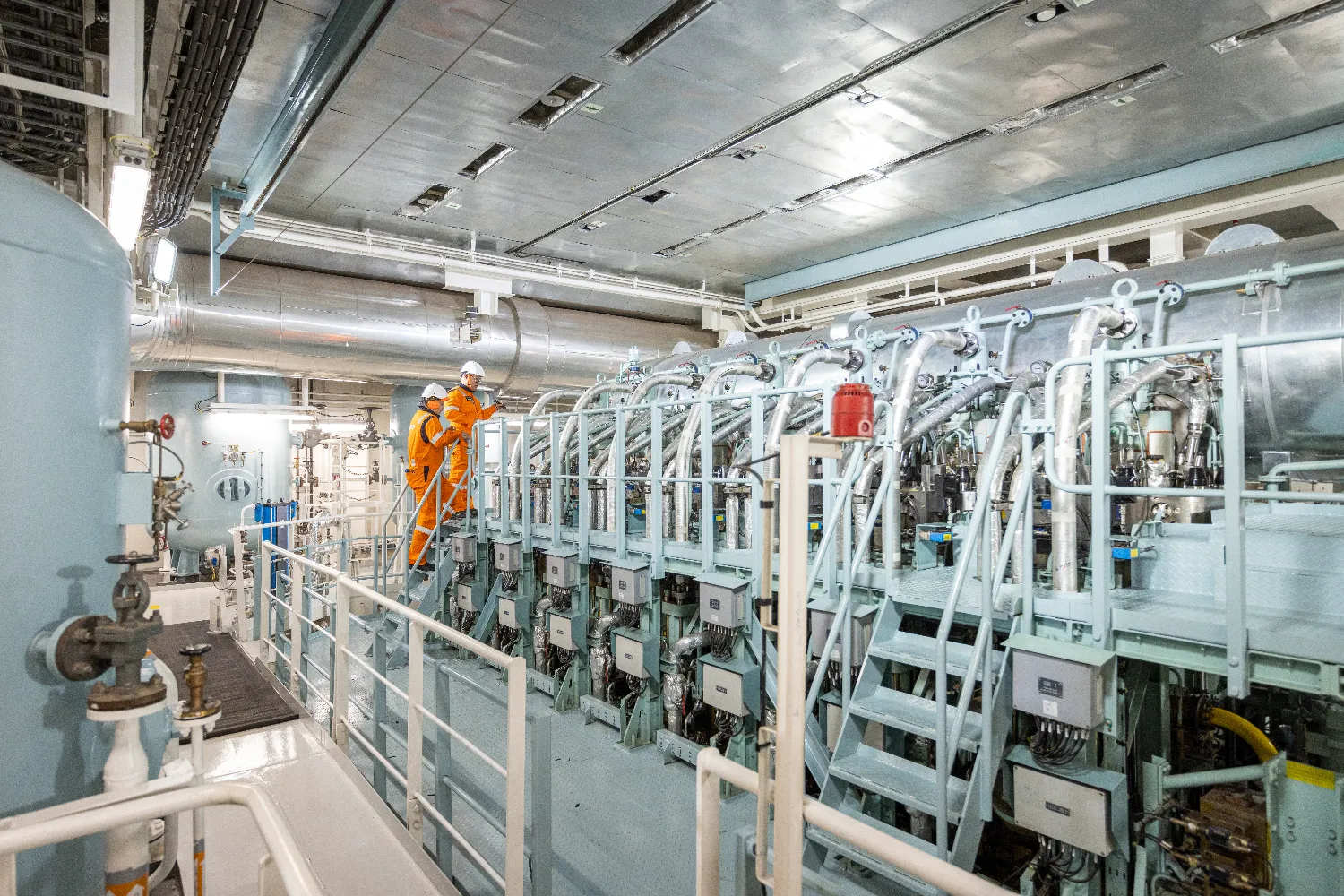
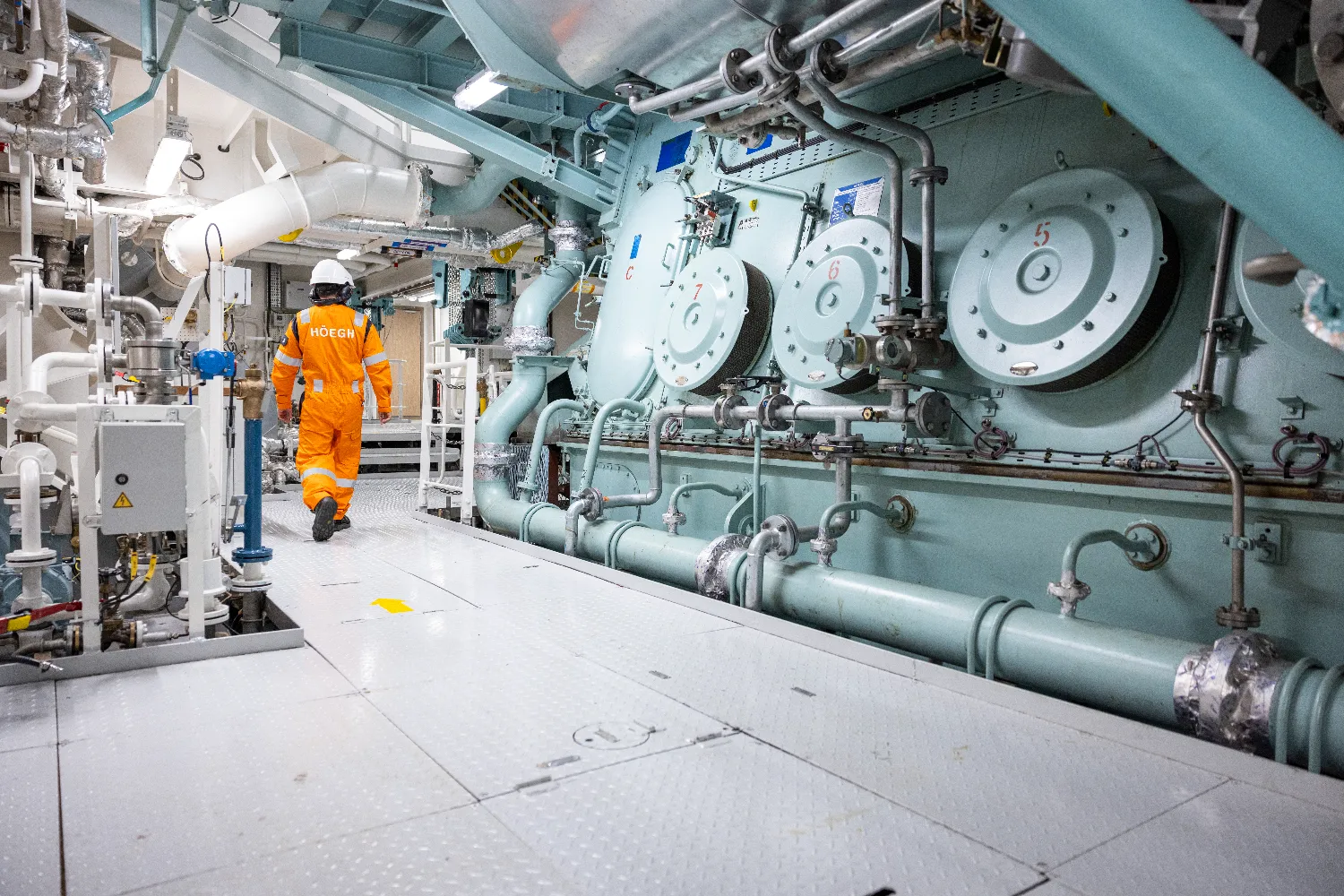
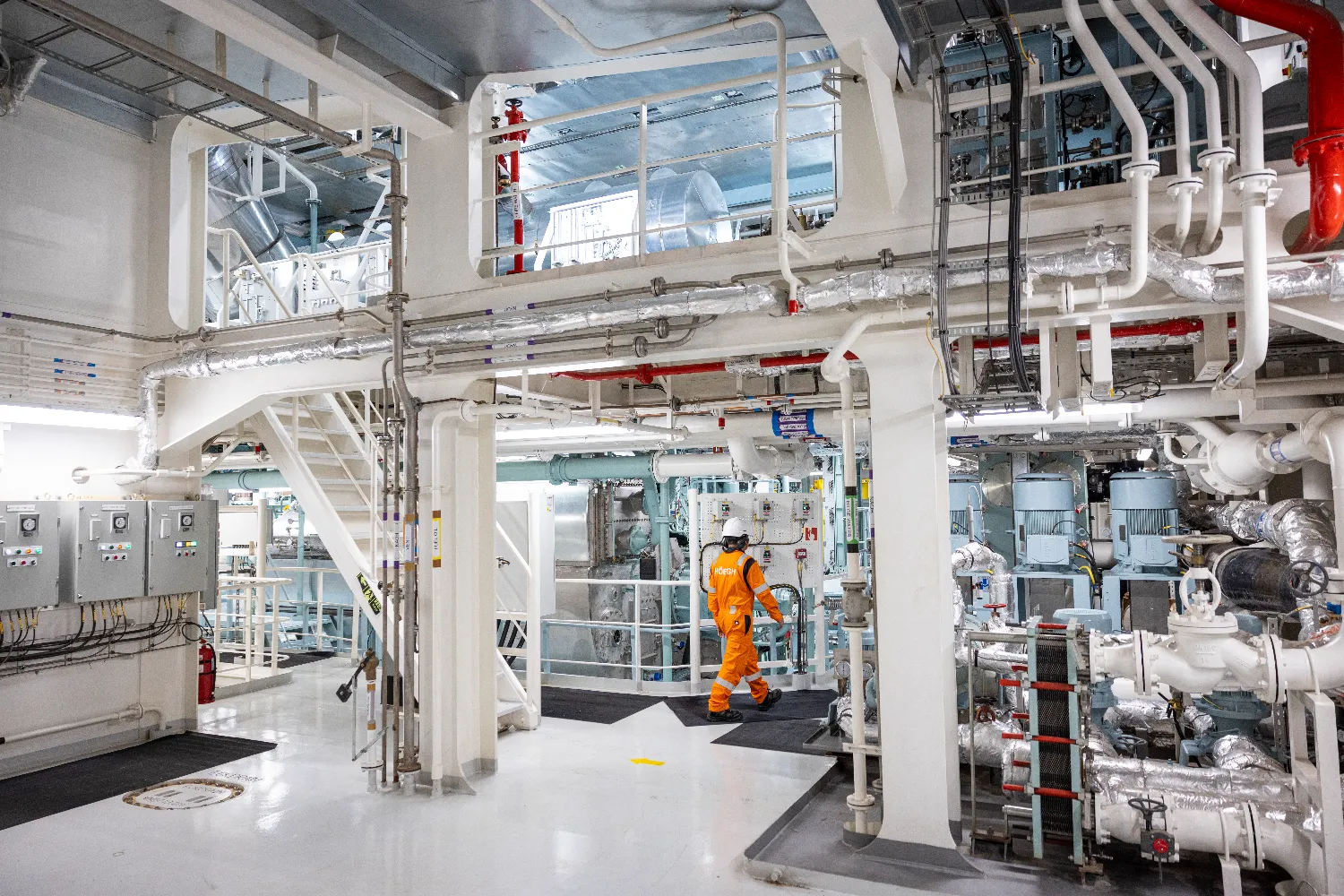
About the author
Berlin-based journalist Moritz Gathmann has been reporting as a correspondent from various regions of Europe for German publications since 2004. His work has been published in DER SPIEGEL magazine, Frankfurter Allgemeine Zeitung, and other media.
